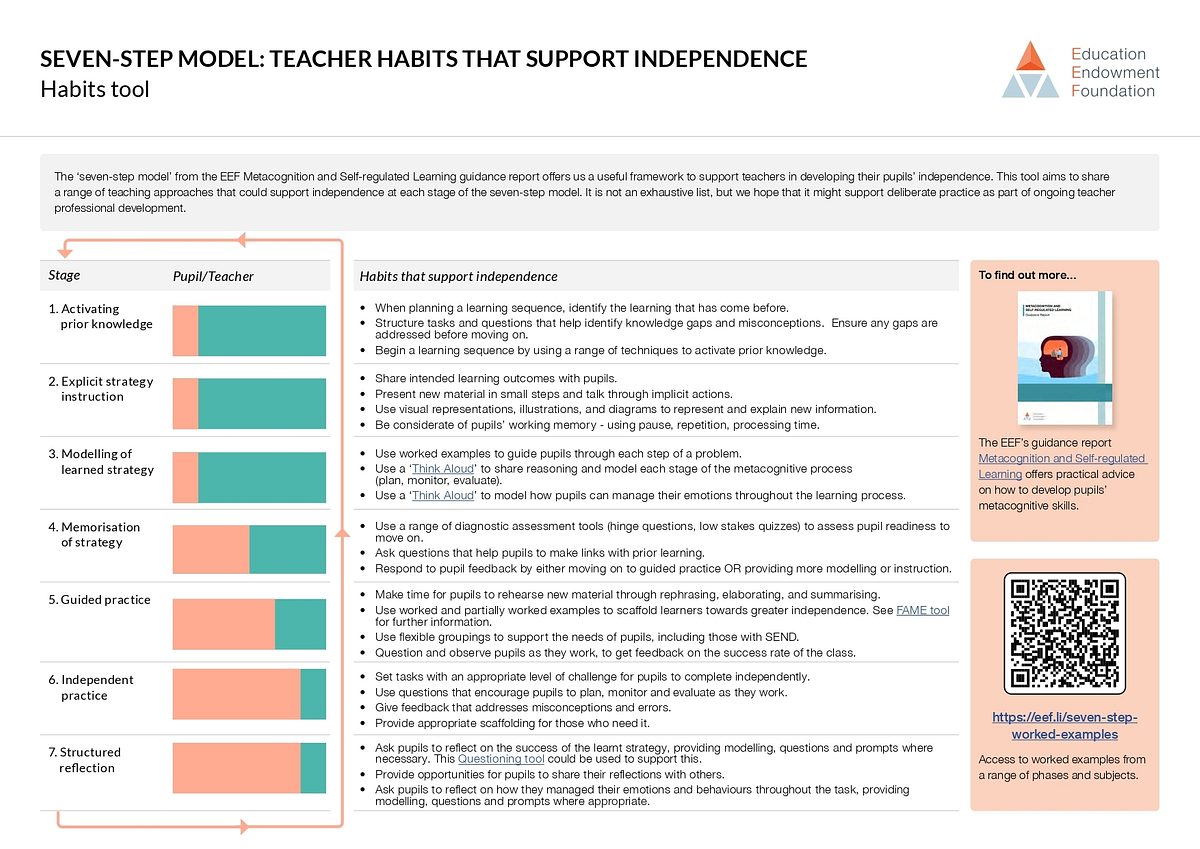
Supporting independence
Building independence is a priority for teachers every day. From homework, to revision, to problem solving or reading comprehension, we are always looking for ways to support pupils to take greater ownership for their learning.
First and foremost, it is crucial to recognise that pupils don’t just develop self-sufficiency overnight – being given task after task to work on alone is unlikely to have the desired impact.
It is a process that is purposefully supported though explicit modelling and teaching. Eventually, novice pupils go on to develop strategies for themselves by recognising similarities and differences between things they have seen and done before.
The ‘seven-step model’ from the EEF’s Metacognition and Self-regulated Learning Guidance report offers us a useful framework to support teachers in developing their pupils’ independence when introducing new content within a lesson or across a learning sequence. Teachers use explicit modelling and offer opportunities for rehearsal before gradually releasing responsibility for learning to pupils.
New worked examples
Effective professional development around how to ingrain the seven-step model effectively might begin with providing teachers with opportunities to plan the techniques they require to improve practice in relation to the framework.
These new worked examples take the original 7‑step model and share a range of subject-specific teaching approaches that could support independence at each stage, including:
- Key Stage 1 maths lesson – The counting on method
- Key Stage 3, 4 and 5 – Using flashcards for self-testing
It is not an exhaustive list, but we hope that these worked examples help to exemplify how the seven-step model could be applied within the context of different phases and subjects.
Further reading/watching:
EEF blog: Modelling Independence – The ‘Seven-step Model’… | EEF (educationendowmentfoundation.org.uk)
Voices from the classroom: Applying the seven-step model to… | EEF (educationendowmentfoundation.org.uk)
